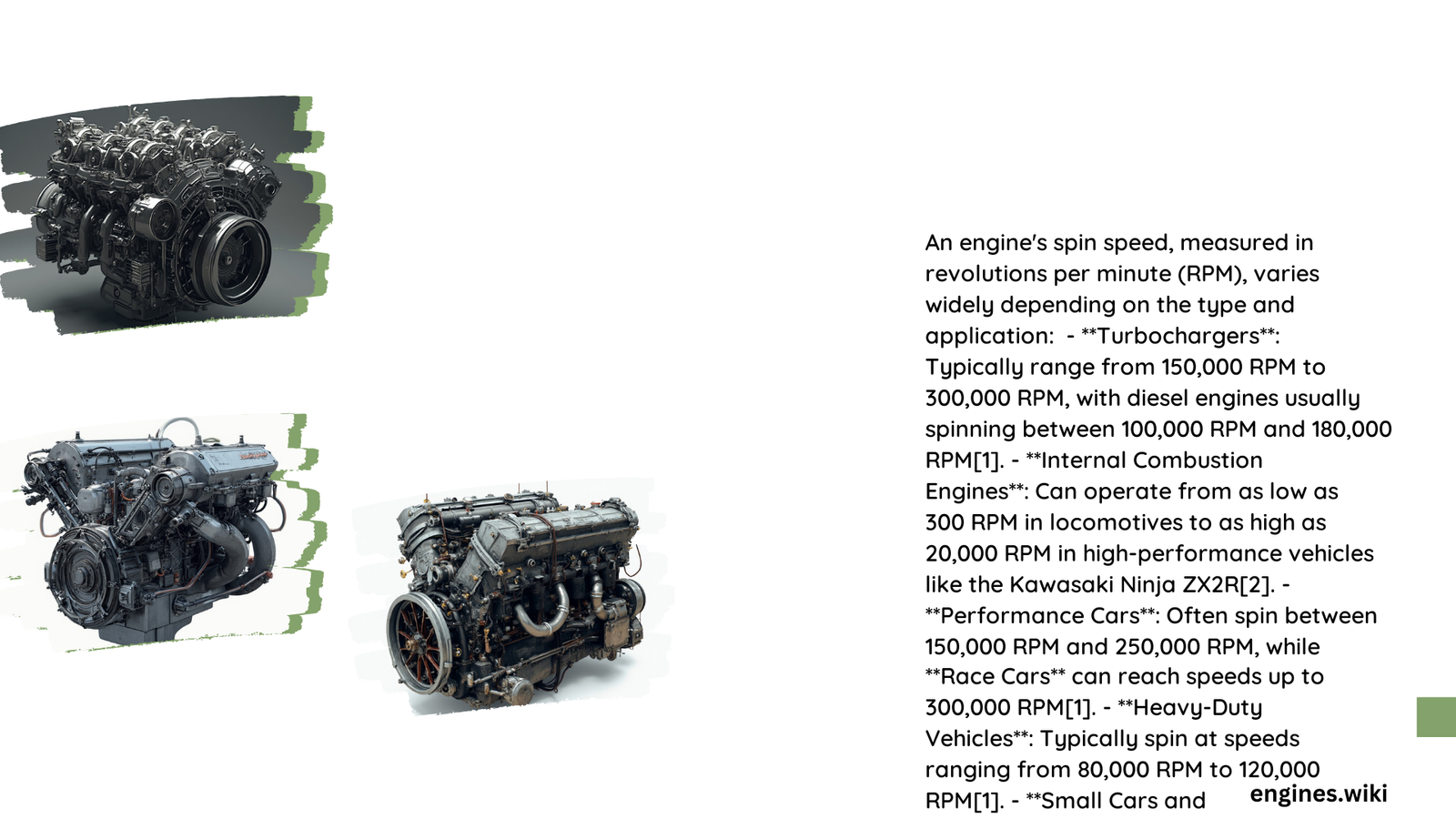Modern vehicle engines are complex mechanical systems that spin at remarkable speeds, typically ranging from 600 RPM during idle to potentially 7,000 RPM during high-performance driving. Understanding how fast an engine spins reveals intricate details about automotive engineering, power generation, and mechanical efficiency.
What Determines Engine Rotational Speed?
Engine rotational speed, measured in revolutions per minute (RPM), varies significantly based on multiple factors:
Vehicle Type RPM Characteristics
| Vehicle Type | Idle RPM Range | Maximum RPM |
|---|---|---|
| Gasoline Cars | 600-900 RPM | 5,000-7,000 RPM |
| Diesel Vehicles | 600-750 RPM | 4,000-5,000 RPM |
| Performance Sports Cars | 750-1,000 RPM | 8,000-9,000 RPM |
What Influences Engine Spin Rates?
- Engine Design
- Cylinder configuration
- Displacement volume
- Fuel type
-
Technological innovations
-
Performance Parameters
- Turbocharging
- Compression ratios
- Valve timing mechanisms
How Do Different Engines Spin?

Gasoline Engine Rotation Dynamics
Gasoline engines typically demonstrate more dynamic rotational characteristics compared to diesel counterparts. Their lighter internal components allow:
- Faster acceleration
- Higher maximum RPM
- More responsive throttle inputs
Diesel Engine Spin Characteristics
Diesel engines prioritize:
– Torque generation
– Mechanical durability
– Lower rotational speeds
– Enhanced fuel efficiency
Technical Factors Affecting Rotational Speed
Several critical factors influence how fast an engine can spin:
- Mechanical Tolerances: Precision engineering determines maximum safe rotational speeds
- Lubrication Systems: Proper oil circulation prevents excessive friction
- Material Strength: Component durability limits maximum RPM
- Cooling Mechanisms: Temperature management prevents mechanical failure
Practical Implications of Engine Spin Rates
Understanding engine rotational speeds helps:
– Optimize vehicle performance
– Predict maintenance requirements
– Enhance driving experience
– Understand mechanical limitations
Real-World RPM Examples
- Standard Sedan: 2,500-3,500 RPM during highway driving
- Sports Car: 4,000-6,000 RPM during acceleration
- Truck: 1,800-2,500 RPM under heavy load
Advanced Measurement Techniques
Modern vehicles utilize sophisticated sensors to monitor:
– Instantaneous rotational speed
– Crankshaft position
– Engine load conditions
– Performance optimization opportunities
Technological Evolution
Contemporary engine management systems continuously adjust rotational parameters, ensuring:
– Maximum efficiency
– Minimal wear
– Optimal performance
– Reduced emissions
Conclusion
Engine rotational speed represents a complex interplay of mechanical engineering, materials science, and computational technology. While typical ranges exist, each vehicle’s unique design influences its specific RPM characteristics.
Reference:
– SAE International Automotive Engineering Standards
– Society of Automotive Engineers Technical Papers
– National Institute of Automotive Technology Research
